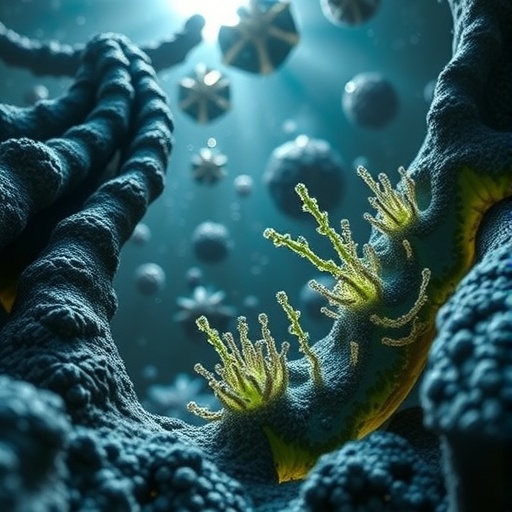In an unprecedented breakthrough, a team of geologists and biologists led by researchers at the University of Colorado Boulder has successfully revived ancient microbes that have been entombed within permafrost ice for up to 40,000 years. This extraordinary feat underscores the dynamic and largely untapped ecosystem frozen beneath much of the Earth’s northern hemisphere. These microbes, long considered dormant or extinct, were coaxed back to life through a carefully designed experiment simulating future Arctic summer conditions, revealing startling implications for our understanding of climate change feedback loops.
Permafrost, a layer of permanently frozen soil, ice, and rock, blankets nearly a quarter of the terrestrial Northern Hemisphere. It acts as a deep-freeze archive, preserving organic material and microorganisms in a state of suspended animation over millennia. Within this frozen ground lie the remains of prehistoric fauna and flora, alongside a vibrant but dormant microbial community. The study focused on these microbial entities, which, despite their age, retained the remarkable capability to metabolize and proliferate once favorable conditions returned.
The research team harnessed samples extracted from the U.S. Army Corps of Engineers’ Permafrost Tunnel near Fairbanks, Alaska—a unique subterranean facility that extends over 350 feet into the frozen earth. The tunnel walls are lined with organic artifacts, including mammoth bones, providing a rare and vivid glimpse into ancient ecosystems locked beneath the icy surface. Samples ranged in age from several thousand to tens of thousands of years, allowing researchers to analyze microbial responses across temporal gradients.
To emulate future thawing scenarios anticipated with ongoing climate change, the scientists incubated these samples in temperatures reminiscent of warm Alaskan summers, specifically 39°F to 54°F (4°C to 12°C). This temperature range is critical because it simulates the conditions in which thawed permafrost might harbor active microbial life, increasing the potential emission of greenhouse gases such as carbon dioxide and methane. By adding deuterium-enriched water to the samples, the team was able to trace microbial uptake of hydrogen atoms, revealing the metabolic activity involved in cell membrane synthesis—a direct indicator of microbial growth.
Initial observations revealed that these ancient microbes resumed activity at a lethargic pace, with only about one in every 100,000 cells dividing daily during the first few months. This rate contrasts starkly with typical laboratory bacteria that can double in mere hours, highlighting an extreme state of dormancy and a slow metabolic restart. Yet, as months progressed—around the six-month mark—microbial communities began to flourish more robustly, with visible biofilm formations emerging, a sign of active colony formation and complex microbial interaction.
These findings imply that microbial revival in thawing permafrost is a gradual process that extends beyond seasonal temperature peaks. Instead of immediate microbial blooms following a thaw, the ecosystem undergoes a protracted awakening. This delayed response is crucial for climate models because it suggests the timing and magnitude of greenhouse gas emissions from permafrost microbial decomposition may be more complex and extended than previously assumed.
Moreover, the microbial colonies revived did not appear to present any known threats to human health, though the researchers maintained strict containment protocols due to the enigmatic nature of these ancient organisms. Their resilience and capacity to metabolize frozen organic material after tens of thousands of years raise profound questions about microbial longevity and ecological roles in ancient and modern contexts.
The broader significance of this research lies in its implications for the global carbon cycle and atmospheric chemistry. Permafrost contains vast reservoirs of organic carbon accumulated over millennia, and thaw-induced microbial decomposition could convert these stores into climate-warming gases. This creates a feedback loop where warming exacerbates microbial activity, which in turn accelerates greenhouse gas release, further intensifying global warming.
Sebastian Kopf, a professor of geological sciences and co-author, emphasizes the urgency in decoding these complex interactions. The study sheds light on one of the most significant uncertainties in climate science—how thawing permafrost feedbacks will influence overall climate trajectories. The resurrection of ancient microbes serves as a tangible example of biological responses underpinning geophysical processes altered by anthropogenic climate change.
This research also highlights the critical role of interdisciplinary approaches in understanding cryospheric dynamics. Combining geological sampling with advanced biochemical tracing techniques like lipid stable isotope probing provides new vistas into microbial ecology at timescales and environments previously inaccessible. Such methodologies could be applied across various permafrost regions worldwide, from Alaska to Siberia, where the permafrost extent is vast but microbial characterization remains sparse.
Despite its breakthroughs, the study acknowledges the limitations inherent in sampling from a single location. Variability in microbial communities, permafrost composition, and temperature regimes across global permafrost zones means that responses may differ substantially elsewhere. Future research expanding geographical sampling and incorporating longer observational periods will refine our predictive capabilities and understanding of permafrost microbial ecology.
The revelations emerging from the Permafrost Tunnel underscore how ancient life, long frozen in time, is poised to influence one of the most critical environmental challenges of the 21st century. As the planet warms, we may be witnessing the reanimation of microbial legacies that not only bridge epochs but carry the power to reshape the future atmospheric balance.
Subject of Research: Ancient microbial life revival in permafrost and its implications for climate change
Article Title: Microbial Resuscitation and Growth Rates in Deep Permafrost: Lipid Stable Isotope Probing Results From the Permafrost Research Tunnel in Fox, Alaska
News Publication Date: 23-Oct-2025
Web References: http://dx.doi.org/10.1029/2025JG008759
References:
Caro, T., Kopf, S., et al. (2025). Microbial Resuscitation and Growth Rates in Deep Permafrost: Lipid Stable Isotope Probing Results From the Permafrost Research Tunnel in Fox, Alaska. Journal of Geophysical Research Biogeosciences. DOI: 10.1029/2025JG008759
Image Credits: Tristan Caro
Keywords: Permafrost thaw, ancient microbes, microbial resuscitation, climate change feedbacks, greenhouse gas emissions, lipid stable isotope probing, Arctic microbiology, cryosphere dynamics, biogeochemical cycles, permafrost carbon release, microbial ecology, climate science




